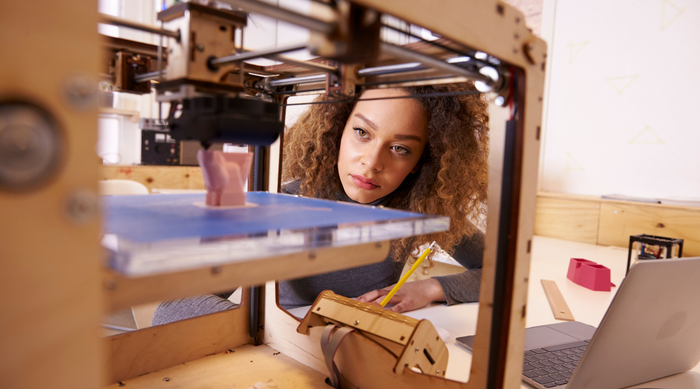When Medical Device Design Had a Dimensional Dilemma
What advanced manufacturing technology solved a sometimes-costly design problem for medical device companies?
February 27, 2024
.png?width=850&auto=webp&quality=95&format=jpg&disable=upscale)
Imagine conceptualizing a product idea in three dimensions, developing designs in three dimensions using a computer-aided design (CAD) system, and then printing out a two-dimensional paper representation to communicate the design to your colleagues. If you were a medical device designer in the '90s, that struggle was real.
The May 1997 issue of MD+DI included an article about a new way to make 3D objects to help designers communicate better early in the product design and development cycle.
Still, at that time, the use of drawings was the primary means of communicating early design concepts to other members of the product development team, such as marketing, engineering, and manufacturing.
"Most designers have experienced the communication failures that result from someone trying to visualize a 3D design from a 2D drawing, leaving much of the design intent to interpretation," according to the 1997 article. "Because of this, many design decisions are made and significant dollars are committed early in the product development process based on limited product and performance knowledge."
Because of the cost of rapid prototyping at that time, device manufacturers did not typically build 3D prototypes until the verification and test phase. As a result it usually wasn't until then that misconceptions and misinterpretations in the product development cycle came to light.
Take, for example, a prosthetic leg. The designer of a socket for the prosthetic leg might use a CAD program to prepare the design, but print a 2D drawing to present the concept to the rest of the team. The team would then make their recommendations based on the drawings.
"Many changes made to the original design result from misinterpretations of the drawings," the article notes. "...To eliminate possible costly errors, companies are exploring methods for printing 3D models instead of 2D drawings. One technology that allows creation of 3D concept models is known as 3D object printing."

Product design engineer using 3D printer to create a 3D model of a product. IMAGE CREDIT: MONKEYBUSINESSIMAGES / ISTOCK / VIA GETTY IMAGES
As the cost of 3D printers has dropped over the past decade, adoption of this technology as a product development tool has picked up.
"Producing a 3D object instead of 2D drawings provides definitive communication of design intent early in the design cycle," the article notes. "However, 3D printing is designed to produce a representation for visual verification and should not be used as a substitute for rapid prototyping."
About the Author(s)
You May Also Like



.png?width=300&auto=webp&quality=80&disable=upscale)
